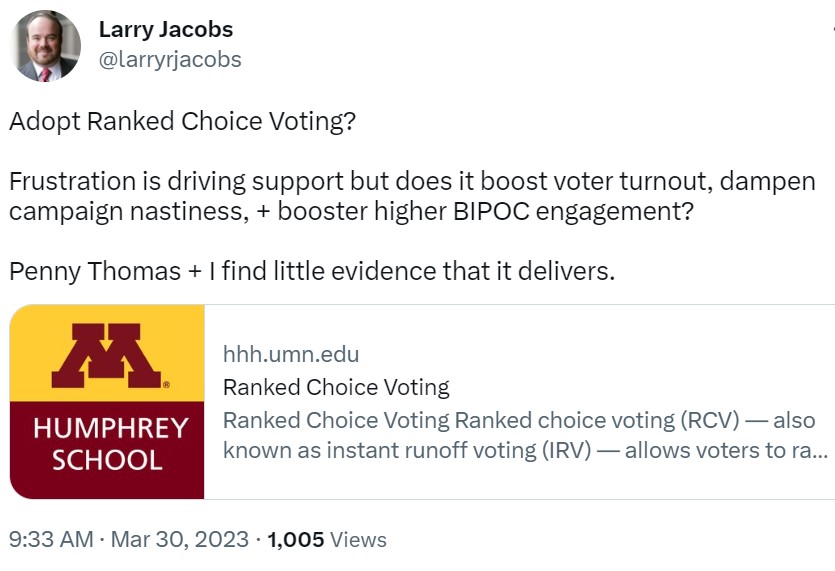Ranked-choice voting moves ahead in the MN Senate, but does it even work?
A recent note by two local political scientists shows that Ranked-Choice Voting (RCV) fails to deliver as promised.
The three-page report, published this month by University of Minnesota professor Larry Jacobs and Penny Thomas, a PhD student, carries the headline “Where’s the evidence supporting Ranked Choice Voting Claims?” The short answer is: nowhere.
Jacobs and Thomas take four claims made by advocates of Ranked-Choice Voting, examine the academic literature, and fail to find substantial supporting evidence.
The claims they examine are as follows, that RCV will:
- Reduce today’s polarization of the political parties.
- Increase the diversity of elected government officials.
- Increase voter turnout and engagement of voters of color.
- Decrease negative campaigning.
In fact, the researchers found evidence to the contrary for claims Nos. 1 and 3. Here’s Prof. Jacobs tweeting about his work,

The Center’s own recent Thinking Minnesota opinion poll found little popular support for RCV. Only 34 percent of Minnesota voters support the measure, 33 percent are opposed, and the rest have too little information on RCV to form an opinion.
In fact, our investigation has discovered that the ranked-choice experiment in Minnesota seems to be entirely the obsession of one bored Texas billionaire.
Regardless, Democrats are moving ahead at the legislature to enact Ranked-Choice Voting into state law. On Monday, the Senate Elections Committee added RCV to the Elections omnibus bill for this budget year. The bill was then forwarded to the Senate Finance Committee.
Presumably, by attaching RCV to a “must pass” budget bill, the measure can attract the 34 votes needed to pass. Tellingly, the measure has not moved forward as a stand-alone bill.